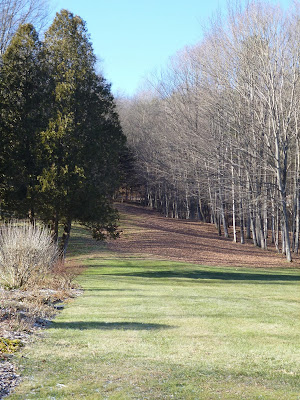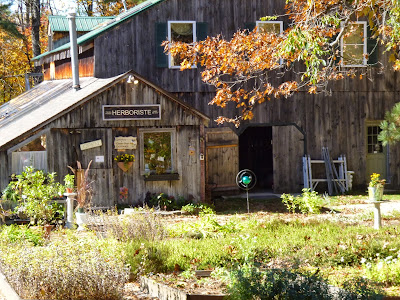A splendid, divergent list this year.
1. Reza Aslan, Zealot, The Life and Times of Jesus of Nazareth (This is a well-researched view of Jesus, the historical man, executed for sedition as were many, many others before and after him. His brother James carried on his teachings which spoke of helping the poor, not the rich temple priests whom he defied. But it was Paul who later shifted things around by calling Jesus the Christ. As for being the (or a) messiah, that term meant an anointed one who would restore the land to the glory it had had under King David. In fact, no one came along to do that and the Romans eventually destroyed Jerusalem and either killed or dispersed its inhabitants. The author says that with the Holy Land destroyed, there was no longer a "mother assembly" to spread the original teaching which lay in the Law of Moses and came from the Jewish religion, so Paul's manufactured version took over. A good presentation of the history of the times ... with debunking of various myths and a more accurate telling of the probability of what happened in this man's life.)
2. Alexandra David-Neel, My Journey to Lhasa, The Classic Story of the Only Western Woman Who Succeeded in Entering the Forbidden City (Here in great detail is this French/Belgian woman's 1923-1924 eight-month journey when, at the age of 56, disguised as a pilgrim, she and her adopted son, a lama, walked from China, through Lhasa, to India. They slept on the ground out in the open and lived on tea and barley flour tsampa. Because her presence as a foreigner was forbidden, she wore a yak-hair braid and darkened her skin with Chinese ink and soot from the bottom of cooking pots. Fluent in Tibetan, she could carry on a good discussion about Buddhist philosophy. A classic tale, indeed!)
3. James W. Douglass, JFK and the Unspeakable, Why He Died and Why It Matters (Thoroughly gripping, well researched account of Kennedy's murder which the author says was planned and executed by those who, shall we say, disagreed with his foreign policy. The thesis is that he sought winning the peace without taking lives, but they sought winning the Cold War with invasions, assassinations, and nuclear first strikes.)
4. Natalie Goldberg, The True Secret of Writing, Connecting Life With Language (Combining Zen meditation with regulated writing and lots of no-nonsense instruction. She's a dedicated writer, teacher, and Zen practitioner who lives in Santa Fe. This must be the fifth or sixth book of hers I've read.)
5. Matthew Goodman, Eighty Days, Nellie Bly and Elizabeth Bisland's History-Making Race Around the World (Here is a vivid description of the race these two young journalists engaged in in 1889-1890 to circle the globe--largely in British ships--in less time than Jules Verne's fictional hero did it in 80 days. Bly took 72 days, 6+ hours with Bisland not far behind. An historically accurate adventure tale.)
6. Jack Kornfield, A Path With Heart, A Guide Through the Perils and Promises of Spiritual Life (This is the sort of book I mark up as I make notes of wonderful passages. For instance, page 45, "... a deeper kind of healing takes place when instead of sending aversion and aggression to wounds and illness, we bring loving-kindness." A wonderful book by a shining teacher of American Buddhism. Make yourself a cup of tea, find a good chair, and open it any place. It's all good stuff!)
7. Mabel Dodge Luhan, Edge of Taos Desert, An Escape to Reality (This and the following are must-reads for those who love northern New Mexico. A friend of D. H. Lawrence and Georgia O'Keeffe, she describes her life in Taos when she arrived in 1917 and came to know and love Tony Luhan, a Taos Pueblo Indian. Splendid.)
8. Mabel Dodge Luhan, Winter in Taos (Very pastoral, very gentle, a love song to Taos with beautiful resonate descriptions of that magical land. Though framed around one winter day, she describes every season as she ruminates on her home, her life, her husband, loving it all--riding horses, taking the dogs up into the hills, knitting by the fire, watching August thunderstorms, planting and harvesting alfalfa, opening the acequia (irrigation channel) for the growing season. It's the sort of book that makes you want to live only there, no place else.)
9. Lynne Olson, Citizens of London, The Americans Who Stood With Britain in Its Darkest, Finest Hour (Though the author speaks of other Americans as well, she concentrates on Edward R. Murrow, Averell Harriman, and our Ambassador, John Gilbert Winant. Extraordinarily moving with an emphasis on London and the British, their dignity, work ethic, and stubbornness in not giving in. Good descriptions of Churchill--a lion of a man with a deep emotional sentiment--and FDR who seemed to assume American superiority over Britain though at that point, we hadn't done all that much. Very moving passages as, on D-Day, when the English went out with their flags and table-cloths and waved to the planes flying overhead to France. Highly readable.)
10. Paul Theroux, The Last Train to Zona Verde, My Ultimate African Safari (Less a safari in our sense than an overland journey through--largely--Namibia and Angola. Having already made the overland trip from Cairo to Cape Town for another book, he was hoping to travel from Cape Town up the West Coast of Africa this time but extremists and xenophobia blocked his way, so he turned around in Angola where the wealthy elite ignored its own people, leaving them hungry and unemployed. Even the wild animals were gone--either killed to be eaten or killed by land mines planted during Angola's war. Theroux is not one to skip slums but seeing an entire country of the abandoned living in squalor, he felt the cities were simply "transit camps for people wishing to flee.")
11. Justin Webb, Cheers, America, How an Englishman Learned to Love America (Sensible, amusing, and a lot of fun. The author was a journalist working for the BBC in Washington, D.C., for eight years. Quick and enjoyable reading, very chatty, with wonderful Brit/Yank comparisons of just the sort you want to know about. )





















































